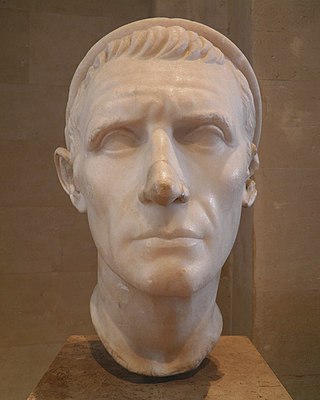
The 2nd century BC started the first day of 200 BC and ended the last day of 101 BC. It is considered part of the Classical era, although depending on the region being studied, other terms may be more suitable. It is also considered to be the end of the Axial Age. In the context of the Eastern Mediterranean, it is the mid-point of the Hellenistic period.
This article concerns the period 229 BC – 220 BC.
This article concerns the period 69 BC – 60 BC.
80s BC is the time period from 89 BC – 80 BC.

This article concerns the 200 BC decade, that lasted from 209 BC to 200 BC.
This article concerns the period 149 BC – 140 BC.
This article concerns the period 159 BC – 150 BC.
This article concerns the period 279 BC – 270 BC.
This article concerns the period 169 BC – 160 BC.
Year 221 BC was a year of the pre-Julian Roman calendar. At the time it was known in Rome as the Year of the Consulship of Asina and Rufus/Lepidus. The denomination 221 BC for this year has been used since the early medieval period, when the Anno Domini calendar era became the prevalent method in Europe for naming years.
Year 190 BC was a year of the pre-Julian Roman calendar. At the time it was known as the Year of the Consulship of Asiaticus and Laelius. The denomination 190 BC for this year has been used since the early medieval period, when the Anno Domini calendar era became the prevalent method in Europe for naming years.

Year 220 BC was a year of the pre-Julian Roman calendar. At the time it was known as the Year of the Consulship of Laevinus/Catulus and Scaevola/Philo. The denomination 220 BC for this year has been used since the early medieval period, when the Anno Domini calendar era became the prevalent method in Europe for naming years.
Year 160 BC was a year of the pre-Julian Roman calendar. At the time it was known as the Year of the Consulship of Gallus and Cethegus and the Fourth Year of Houyuan. The denomination 160 BC for this year has been used since the early medieval period, when the Anno Domini calendar era became the prevalent method in Europe for naming years.
Year 164 BC was a year of the pre-Julian Roman calendar. At the time it was known as the Year of the Consulship of Torquatus and Longinus. The denomination 164 BC for this year has been used since the early medieval period, when the Anno Domini calendar era became the prevalent method in Europe for naming years.
Antiochus is a Greek male first name, which was a dynastic name for rulers of the Seleucid Empire and the kingdom of Commagene. In Jewish historical memory, connected with the Maccabean Revolt and the holiday of Hanukkah, "Antiochus" refers specifically to Antiochus IV Epiphanes.

Antiochus III the Great was a Greek Hellenistic king and the 6th ruler of the Seleucid Empire, reigning from 223 to 187 BC. He ruled over the region of Syria and large parts of the rest of western Asia towards the end of the 3rd century BC. Rising to the throne at the age of eighteen in April/June 223 BC, his early campaigns against the Ptolemaic Kingdom were unsuccessful, but in the following years Antiochus gained several military victories and substantially expanded the empire's territory. His traditional designation, the Great, reflects an epithet he assumed. He also assumed the title Basileus Megas, the traditional title of the Persian kings. A militarily active ruler, Antiochus restored much of the territory of the Seleucid Empire, before suffering a serious setback, towards the end of his reign, in his war against Rome.

Antiochus XII Dionysus Epiphanes Philopator Callinicus was a Hellenistic Seleucid monarch who reigned as King of Syria between 87 and 82 BC. The youngest son of Antiochus VIII and, most likely, his Egyptian wife Tryphaena, Antiochus XII lived during a period of civil war between his father and his uncle Antiochus IX, which ended with the assassination of Antiochus VIII in 96 BC. Antiochus XII's four brothers laid claim to the throne, eliminated Antiochus IX as a claimant, and waged war against his heir Antiochus X.

Antiochus X Eusebes Philopator was a Seleucid monarch who reigned as King of Syria during the Hellenistic period between 95 BC and 92 BC or 89/88 BC. He was the son of Antiochus IX and perhaps his Egyptian wife Cleopatra IV. Eusebes lived during a period of general disintegration in Seleucid Syria, characterized by civil wars, foreign interference by Ptolemaic Egypt and incursions by the Parthians. Antiochus IX was killed in 95 BC at the hands of Seleucus VI, the son of his half-brother and rival Antiochus VIII. Antiochus X then went to the city of Aradus where he declared himself king. He avenged his father by defeating Seleucus VI, who was eventually killed.

Philip I Epiphanes Philadelphus was a Hellenistic Seleucid monarch who reigned as the king of Syria from 94 to either 83 or 75 BC. The son of Antiochus VIII and his wife Tryphaena, he spent his early life in a period of civil war between his father and his uncle Antiochus IX. The conflict ended with the assassination of Antiochus VIII; Antiochus IX took power in the Syrian capital Antioch, but soon fell in battle with Antiochus VIII's eldest son Seleucus VI.
This article concerns the period 99 BC – 90 BC.





